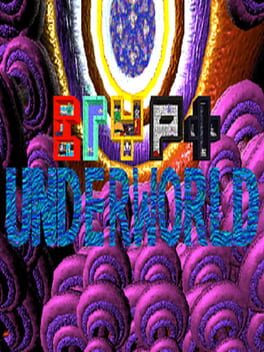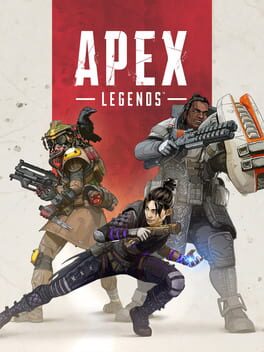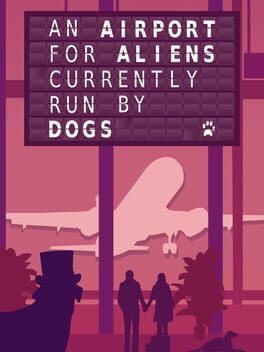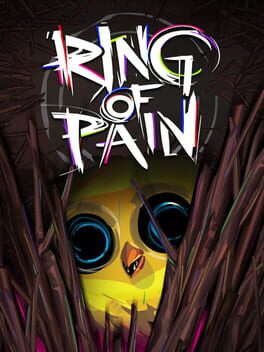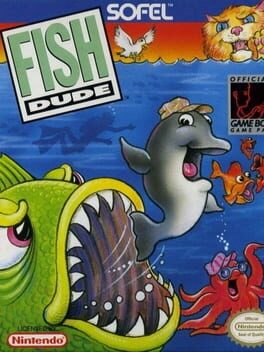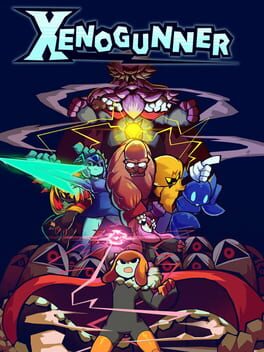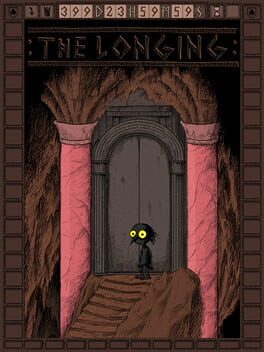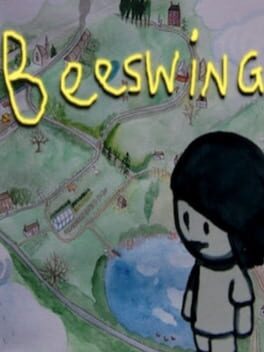vehemently
2006
2023
Not to be a bummer but I sort of resent this. My initial review, which I stand by, says that Norco did not leave me with questions about either its world or my own. Now, the developers release this, apparently a follow-up to a series of posts on Steam, that just answer and explain lore and answer some of the few ambiguous things left in the world.
Why? Why, for a game that seems to want you to linger on words like hauntology and ponder magical realist themes, would the creators also go out of their way to answer any remaining questions? Why is any of this necessary? Does this really enhance the experience, or does it rob us of what little mystery we had left?
There's only so many times I can say "the danger is in the neatness of identifications" before someone is going to slap me over the backside of the head. So, I'll take Beckett's rephrasing that I hope is easier to understand: "Literary criticism is not bookkeeping." Neither is writing.
Why? Why, for a game that seems to want you to linger on words like hauntology and ponder magical realist themes, would the creators also go out of their way to answer any remaining questions? Why is any of this necessary? Does this really enhance the experience, or does it rob us of what little mystery we had left?
There's only so many times I can say "the danger is in the neatness of identifications" before someone is going to slap me over the backside of the head. So, I'll take Beckett's rephrasing that I hope is easier to understand: "Literary criticism is not bookkeeping." Neither is writing.
2019
2019
2022
Something you may not know about me is that I would like to be a librarian. I have many careers I’d love to venture into, but of the ones that are less fanciful, librarianship is the most prominent. And of the possibilities, I would love to be a reference librarian. There are a lot of specific reasons that I won’t get into (and reasons it may not be in the cards for me) but a big part of it is just that I like helping people, and I like helping people find things. One of my favorite things in the world is recommending things to people. The reference interview is a bundle of opportunities: the opportunity to explore the patron’s understanding of the library, to explore the nature of their interests, and to explore the vast well of human knowledge found in the library stacks. It is a beautiful thing that I would like to be a part of.
Kakureza Library, is, unfortunately, not really about this, even if it is trying to be. It’s a short visual novel that is framed around you running the checkout counter at a library. While I may come across as harsh going forward, I want to clarify that I think the game is merely mediocre. It’s a bit of a mess, but nothing cruel is in here, just my own disappointment. There are other failings here, of course: it’s plot is kind of nonsense (something about a cult and robots?), the characterization isn’t too in-depth, and it’s very poorly built and poorly localized. But none broke my heart more than realizing that Kakureza Library could never be the fantasy I was hoping for.
I understand that this game is not exactly a blockbuster hit, so I’ll explain how it works. The way you play Kakureza Library is pretty simple. Patrons come up to you, with books both to return and check out. First you click their library card. Then, you click all the books they’ve brought to you, and the game automatically checks out or returns anything they’ve brought to you. About once a day, one of them will ask you if you have a certain kind of book. Sometimes they know exactly what they’re looking for, and sometimes they only have a vague idea of what they need. So, you look through the little catalog app you have, looking for what they seem to be asking for, and you loan it to them. Depending on whether it’s what they need, your little score in the corner goes up or down. Other random non-checkout related things raise and lower the score, like some minor puzzles. If you get a perfect score of 36, you get the true ending. That’s sort of it.
I want to make a brief comparison to Papers, Please, which bears some similarities. Both essentially deal with processing people through a system. In Papers, Please, it’s the border policies of an authoritarian regime. In Kakureza Library, it’s the check out policies of a local library. But the result of these simulations are the same: by the end, the people who pass in front of you are gradually dehumanized. Now, of course, the dehumanization in Papers, Please is a lot more severe and a lot more pointed. In Kakureza Library, it is a banal one. There’s an old Mitchell & Webb skit about a librarian cruelly berating a woman as she checks out a book for her horrible taste. That she is tasteless, predictable, and dull. Kakureza Library gives you the creeping sensation that you could become him. Of course, you'd never be so cruel, right? But the humdrum goes on, a part of you could turn bitter. The old man always wants local history books. The young boy always wants comics and sports books. The goth girl always wants vaguely goth themed books. There’s little aberrations, sure. But people, ultimately, are not all that deep. They like the things they like. They know what they like, and they like what they know. They’re entitled to that, of course. But your interface with them is as simple as a series of quick clicks. It’s as over as quickly as it started, and there is not a chance for much to develop.
And this, to me, gets at sort of the root failure of Kakureza Library. The beauty of the reference interview is, in part, found in the recognition of another human being. You need to open yourself up to understanding someone else’s wants and needs. It’s not just about handing them a book. When someone comes to you with a query, when they ask you for help, you start a journey together. You try to understand what they want, what they are looking for, what they want out of the library’s resources, and what you can give them. It can take you all sorts of different places, and you rarely know where you’ll end up. They may end up with nothing, or something wildly different from what they were expecting. It’s a tour of junctures, a peek into the archive and its machinations. That journey, that process of discovery, of learning how to navigate the archive, the uncovering of the known, this is part of what makes libraries beautiful. But that never happens in Kakureza Library. You always have the exact right book for them. You always have exactly what they needed. They always need one specific book. You tell them what it is and whether you have it. You hand it to them, and then they leave.
Libraries are so much more than a silo of information. They are also gymnasiums of meaning, of meaning-making, of possibility and discovery. I want to be careful about romanticizing them, but I do not think recognizing the transformative capacity of the library is in opposition with a realistic understanding of what they are. Libraries are perfectly mundane, but are filled with possibility. It is this duality that is important. Libraries are, both fortunately and unfortunately, one of the few socialized services that most towns and cities currently allow to be free. As such, they are often havens for needs beyond just books. They have movies, music, audiobooks, games, newspapers, computers. There are seminars, readings, children’s events, workshops, and most of all, places to simply be. These are the libraries of reality: both boring and quiet, and bursting with possibility for each person who walks through its doors. While this wasn’t always the case, this is not an uncommon perspective to hear from librarians these days. When we treat a library as a simple database, we can start to treat the patrons who use it as information receptacles, like the banking model of education. They want nothing other than information, and so we shove it in their mouths. This is the worst kind of library to be in. Libraries ought be places of discovery, of dialogue, of liberation, of investigation, of development. Libraries ought not be houses of interpellation but houses of invention.
Kakureza Library wants to see the humanity in your patrons. It wants to create a world where librarians can help people and treat them with kindness, and where the people who go to the library find some fulfillment. It wants to show the libraries can make the world a better place. But its visions of the library are incomplete. The pictures it paints do not show you what happens in the study rooms, in the conference rooms, on the computers, in the quiet nooks. Because all Kakureza Library is is a game about checking out books. You’re not a reference librarian, or an archivist, or an outreach librarian, or a library manager, or even really a library page. All you really do is handle books. Out they go, in they come, like the people who hold them. When we reduce the library the check-out counter, we become the laser scanner we use there: all we see is the barcode. But the library is not a transaction.
Kakureza Library, is, unfortunately, not really about this, even if it is trying to be. It’s a short visual novel that is framed around you running the checkout counter at a library. While I may come across as harsh going forward, I want to clarify that I think the game is merely mediocre. It’s a bit of a mess, but nothing cruel is in here, just my own disappointment. There are other failings here, of course: it’s plot is kind of nonsense (something about a cult and robots?), the characterization isn’t too in-depth, and it’s very poorly built and poorly localized. But none broke my heart more than realizing that Kakureza Library could never be the fantasy I was hoping for.
I understand that this game is not exactly a blockbuster hit, so I’ll explain how it works. The way you play Kakureza Library is pretty simple. Patrons come up to you, with books both to return and check out. First you click their library card. Then, you click all the books they’ve brought to you, and the game automatically checks out or returns anything they’ve brought to you. About once a day, one of them will ask you if you have a certain kind of book. Sometimes they know exactly what they’re looking for, and sometimes they only have a vague idea of what they need. So, you look through the little catalog app you have, looking for what they seem to be asking for, and you loan it to them. Depending on whether it’s what they need, your little score in the corner goes up or down. Other random non-checkout related things raise and lower the score, like some minor puzzles. If you get a perfect score of 36, you get the true ending. That’s sort of it.
I want to make a brief comparison to Papers, Please, which bears some similarities. Both essentially deal with processing people through a system. In Papers, Please, it’s the border policies of an authoritarian regime. In Kakureza Library, it’s the check out policies of a local library. But the result of these simulations are the same: by the end, the people who pass in front of you are gradually dehumanized. Now, of course, the dehumanization in Papers, Please is a lot more severe and a lot more pointed. In Kakureza Library, it is a banal one. There’s an old Mitchell & Webb skit about a librarian cruelly berating a woman as she checks out a book for her horrible taste. That she is tasteless, predictable, and dull. Kakureza Library gives you the creeping sensation that you could become him. Of course, you'd never be so cruel, right? But the humdrum goes on, a part of you could turn bitter. The old man always wants local history books. The young boy always wants comics and sports books. The goth girl always wants vaguely goth themed books. There’s little aberrations, sure. But people, ultimately, are not all that deep. They like the things they like. They know what they like, and they like what they know. They’re entitled to that, of course. But your interface with them is as simple as a series of quick clicks. It’s as over as quickly as it started, and there is not a chance for much to develop.
And this, to me, gets at sort of the root failure of Kakureza Library. The beauty of the reference interview is, in part, found in the recognition of another human being. You need to open yourself up to understanding someone else’s wants and needs. It’s not just about handing them a book. When someone comes to you with a query, when they ask you for help, you start a journey together. You try to understand what they want, what they are looking for, what they want out of the library’s resources, and what you can give them. It can take you all sorts of different places, and you rarely know where you’ll end up. They may end up with nothing, or something wildly different from what they were expecting. It’s a tour of junctures, a peek into the archive and its machinations. That journey, that process of discovery, of learning how to navigate the archive, the uncovering of the known, this is part of what makes libraries beautiful. But that never happens in Kakureza Library. You always have the exact right book for them. You always have exactly what they needed. They always need one specific book. You tell them what it is and whether you have it. You hand it to them, and then they leave.
Libraries are so much more than a silo of information. They are also gymnasiums of meaning, of meaning-making, of possibility and discovery. I want to be careful about romanticizing them, but I do not think recognizing the transformative capacity of the library is in opposition with a realistic understanding of what they are. Libraries are perfectly mundane, but are filled with possibility. It is this duality that is important. Libraries are, both fortunately and unfortunately, one of the few socialized services that most towns and cities currently allow to be free. As such, they are often havens for needs beyond just books. They have movies, music, audiobooks, games, newspapers, computers. There are seminars, readings, children’s events, workshops, and most of all, places to simply be. These are the libraries of reality: both boring and quiet, and bursting with possibility for each person who walks through its doors. While this wasn’t always the case, this is not an uncommon perspective to hear from librarians these days. When we treat a library as a simple database, we can start to treat the patrons who use it as information receptacles, like the banking model of education. They want nothing other than information, and so we shove it in their mouths. This is the worst kind of library to be in. Libraries ought be places of discovery, of dialogue, of liberation, of investigation, of development. Libraries ought not be houses of interpellation but houses of invention.
Kakureza Library wants to see the humanity in your patrons. It wants to create a world where librarians can help people and treat them with kindness, and where the people who go to the library find some fulfillment. It wants to show the libraries can make the world a better place. But its visions of the library are incomplete. The pictures it paints do not show you what happens in the study rooms, in the conference rooms, on the computers, in the quiet nooks. Because all Kakureza Library is is a game about checking out books. You’re not a reference librarian, or an archivist, or an outreach librarian, or a library manager, or even really a library page. All you really do is handle books. Out they go, in they come, like the people who hold them. When we reduce the library the check-out counter, we become the laser scanner we use there: all we see is the barcode. But the library is not a transaction.
I could provide a rationalization of the Dog Airport game, argue how this game is a unique and interesting portrayal of air travel, how tender and subtle its apocalyptic romance is, or even offer some unique philosophical analysis of the game, to explain why I love it so much.
But the truth is? It just makes me smile.
Utterly delightful and charming. Constantly smiling and laughing throughout the whole game. Some of the best game writing I've seen in years.
But the truth is? It just makes me smile.
Utterly delightful and charming. Constantly smiling and laughing throughout the whole game. Some of the best game writing I've seen in years.
This review contains spoilers
Click here to read this on Medium with images.
It is six o’clock, and I am picking my father up from the airport. I’m inching through the parking lot, flanked on both sides by an unrelenting phalanx of cars. I am beset with a singular dread. “This is hell,” I say to myself. Because there’s nothing I can do other than move slowly through this corridor, hoping to find an empty space. Claustrophobia, nowhere to run, just walls of cars. As the feeling closes in on me, I check my phone. My clock is right, but the day is wrong; his flight is tomorrow. I’ve driven all the way out here essentially for nothing. This means that, for a brief moment, the only thing I can do in this parking lot is, well, be. The parking lot’s sole purpose is to house cars, and I’m not a car. This means the simple act of existing, in a parking lot, is hostile. “This is hell,” I say to myself again.
I escaped the parking lot, and driving home, I found myself acutely aware of just how uninhabitable places I moved through were. Built for cars, but not built for people. The highways, a flat vascular system without flora or fauna. The underpass, an incidental sukkah with no kindness and no nourishment. The industrial part of town, with wide, long roads and warehouses, dead grass in the gaps of concrete. There is a violence to it: the possibility of a human life is rejected. I try to imagine anyone living in these places. Anyone living a life. And I can’t.
As I played Armored Core VI: Fires of Rubicon, I kept thinking about that parking lot. How unnatural it felt to be in such a place. How impossible human life felt. How unforgiving it was to bodies.
There’s this adage in some circles (or the ones I am adjacent to) that mech fiction is, fundamentally, about bodies. I grimace when I hear this, not because there isn’t truth to it, but because I feel it’s a bit myopic and jealous. Mech fiction is about a lot more than just bodies, and to reduce a genre to some core theme is obviously absurd. But as I play Armored Core VI, I cannot stop thinking about bodies. Not because of any bodies in view. Rather, their absence haunts Rubicon.
You never see any human beings in Armored Core VI. You see sketches of them, drawn an unknowable time ago, but every voice you hear on the comms, every pilot who threatens your life, they’re disembodied and faceless. In Can Androids Pray?, two pilots have to interrogate the possibility that they’ve never had a body, that their consciousness exists solely within the mech that lies broken in the sand. A part of me wonders why no one asks this question on Rubicon. Going through this game’s world, I struggle to imagine how anyone could live here. I challenged myself, constantly, to imagine life here. But I couldn’t.
Armored Core VI is a level-based game, which is a rarity these days. Some AAA releases still hold on, like Monster Hunter, which I couldn’t help but think about. Levels increase a sense of artificiality to a space; the pretense that these are real places in a real world melts away. They cannot exist in a contiguous map, because they don’t exist in a world. In Monster Hunter, these spaces feel like safari enclosures: brimming with life, but ultimately an artificial. And in a lot of games (especially the more amateur ones) there can be these wide open spaces that call to mind a Chirico painting: great, empty piazzas, flat spaces of architectural form, punctuated with surreal substance. But on Rubicon, rather than the quaint Italian architecture, these tableaus are dominated by the industrial, the mechanical, the brutal.
Your mech stands over a massive mining pit. Machinery hangs over it like a mobile. Ayre says to you, “Even the Rubiconians have forsaken this lifeless place.” This puzzles me. What does she mean “this lifeless place”? This place is just as lifeless as anywhere on Rubicon, anywhere I’ve been. The Rubiconians want to live on Rubicon, make a life here. I’m not sure such a thing is even possible.
As I look at these battlefields, I see a sort of primordial brutalism assault me. You stomp through Xylem, the one of the closest things the entire game has to a liveable place, and it feels so wrong. These squat skyscrapers and massive intersections freckling the playspace. It feels like a massive folly city. All artifice. Then I think of Babbdi, an independent game set in the eponymous city, which sees you attempt to leave a brutalist city. It’s largely empty, and difficult to navigate without the aid of various tools. The people who live here are strange and sad. I’m filled with unease as I look up in awe at the columns of concrete and grids of rebar. Now, I think there is a charm to brutalism; it’s unpretentious and simple, as easy to contemplate as it is to ignore. But in these places, I have to ask myself why it feels so wrong to wonder through them. Why, when addressing brutalism in these ways, does it feel so horrible? Paul Virilio, in Bunker Archaeology, considers brutalism as a style of war, that brutalism has rendered the urban an ugly reflection of the bunker.
“Slowed down in his physical activity but attentive, anxious over the catastrophic probabilities of his environment, the visitor in this perilous place is beset with a singular heaviness; in fact he is already in the grips of that cadaveric rigidity from which the shelter was designed to protect him.”
If brutalism is as Virilio says, and adopts the architectural language of the bunker, and thus the reproduction of war, then brutalism is the core language of most video games. And look closely, and you can see it everywhere. These are worlds designed for violence, as Jacob Geller puts it, and it shows. Open up any number of games, and you can find it. You can see the spirit of brutalism possessing all the vertices of Quake II, see it in the industrial dystopias of Half Life 2, see it in the sprawling slaughterscapes of S.T.A.L.K.E.R. and PUBG. The architecture of these games is brutalism just as Virilio describes: the mirror image of the battlefield in the urban.
But typically, as you skulk through a dilapidated factory, you can imagine what someone could do there. You can envision someone walking through these spaces, going to work, walking home. And you see people, NPCs or enemies or corpses, around here. The city of Babbdi, despite its imposing height, does have citizens, living their little lifes, dying their little deaths. Life is possible here, abject or not. Grass poking through gaps in the sidewalk. Meanwhile, Umurangi Generation rages, joyously and passionately, against the hostility of brutalism. It’s perhaps the most scalding rejection of the naked brutalism of video games. The spires of concrete are painted with graffiti of all colors. People eat, mourn, dance. The place is undeniably alive. In spite of the very real gnawing forces of capital and empire, found manifest in the stark walls of the city, people never stop being people, they never stop living.
But when I look at the spaces of Rubicon, I cannot imagine a human even existing in these places. The spaces of Armored Core VI are often called post-apocalyptic, but that implies any society ever existed here. As I look around, I can’t see these places as even ruins. I see ladders, I see walkways, I see cars. But when I close my eyes and try to envision it, I cannot see people. As I blast my way through Grid 086, I cannot even imagine the utility of this place. What are these buildings for? What is even done here? Not just life, but labor and war, typically the last resorts of human activity that industrial capitalism permits, they both seem impossible here. No, every last vestige of the human body is invisible here. At one point, you cram your mech inside a container that’s launched across an ocean. “Cinder” Carla explains that this isn’t really built for an AC. Even the mech, an ersatz body that serves as your surrogate on this lifeless planet, is forced to bend to the hostility of this place. This planet of warehouses and parking lots.
Xylem, this floating city, is revealed to be a massive ship. The facade gives way. It unfolds like a flower and takes to the sky. Of course it’s not a city, not really. Nobody could ever really live here. How could they? What’s revealed is that Ayre, your Rubiconian ally, literally does not have a body at all. She’s a disembodied consciousness, alive in the coral. The only way to live on Rubicon is to cast off the body, imagine life as an amorphous pulse buried deep in the crust of the planet. The glimpses of organic life on Rubicon feel wrong. The trees crumple like paper when you touch them. The strange coral worms you stumble into seem like cartoons. And coral, while apparently alive, is totally amorphous and formless; it doesn’t have an anatomy. It can live here, because it doesn’t have a body. And coral flows like sand, not destructive, not creative, but a constant flux. There are no homes here, not that I can see. All I can see here is warehouses and parking lots. Stone. Rebar. Rails. Hyperbrutalism. Perhaps it’s fitting that parts of Rubicon are named anatomically and biologically: Xylem, worm robots, Ibis, “Vascular” structures. Bodies implied, but never found. After all, the only body that could live on Rubicon would be made of concrete and steel.
It is six o’clock, and I am picking my father up from the airport. I’m inching through the parking lot, flanked on both sides by an unrelenting phalanx of cars. I am beset with a singular dread. “This is hell,” I say to myself. Because there’s nothing I can do other than move slowly through this corridor, hoping to find an empty space. Claustrophobia, nowhere to run, just walls of cars. As the feeling closes in on me, I check my phone. My clock is right, but the day is wrong; his flight is tomorrow. I’ve driven all the way out here essentially for nothing. This means that, for a brief moment, the only thing I can do in this parking lot is, well, be. The parking lot’s sole purpose is to house cars, and I’m not a car. This means the simple act of existing, in a parking lot, is hostile. “This is hell,” I say to myself again.
I escaped the parking lot, and driving home, I found myself acutely aware of just how uninhabitable places I moved through were. Built for cars, but not built for people. The highways, a flat vascular system without flora or fauna. The underpass, an incidental sukkah with no kindness and no nourishment. The industrial part of town, with wide, long roads and warehouses, dead grass in the gaps of concrete. There is a violence to it: the possibility of a human life is rejected. I try to imagine anyone living in these places. Anyone living a life. And I can’t.
As I played Armored Core VI: Fires of Rubicon, I kept thinking about that parking lot. How unnatural it felt to be in such a place. How impossible human life felt. How unforgiving it was to bodies.
There’s this adage in some circles (or the ones I am adjacent to) that mech fiction is, fundamentally, about bodies. I grimace when I hear this, not because there isn’t truth to it, but because I feel it’s a bit myopic and jealous. Mech fiction is about a lot more than just bodies, and to reduce a genre to some core theme is obviously absurd. But as I play Armored Core VI, I cannot stop thinking about bodies. Not because of any bodies in view. Rather, their absence haunts Rubicon.
You never see any human beings in Armored Core VI. You see sketches of them, drawn an unknowable time ago, but every voice you hear on the comms, every pilot who threatens your life, they’re disembodied and faceless. In Can Androids Pray?, two pilots have to interrogate the possibility that they’ve never had a body, that their consciousness exists solely within the mech that lies broken in the sand. A part of me wonders why no one asks this question on Rubicon. Going through this game’s world, I struggle to imagine how anyone could live here. I challenged myself, constantly, to imagine life here. But I couldn’t.
Armored Core VI is a level-based game, which is a rarity these days. Some AAA releases still hold on, like Monster Hunter, which I couldn’t help but think about. Levels increase a sense of artificiality to a space; the pretense that these are real places in a real world melts away. They cannot exist in a contiguous map, because they don’t exist in a world. In Monster Hunter, these spaces feel like safari enclosures: brimming with life, but ultimately an artificial. And in a lot of games (especially the more amateur ones) there can be these wide open spaces that call to mind a Chirico painting: great, empty piazzas, flat spaces of architectural form, punctuated with surreal substance. But on Rubicon, rather than the quaint Italian architecture, these tableaus are dominated by the industrial, the mechanical, the brutal.
Your mech stands over a massive mining pit. Machinery hangs over it like a mobile. Ayre says to you, “Even the Rubiconians have forsaken this lifeless place.” This puzzles me. What does she mean “this lifeless place”? This place is just as lifeless as anywhere on Rubicon, anywhere I’ve been. The Rubiconians want to live on Rubicon, make a life here. I’m not sure such a thing is even possible.
As I look at these battlefields, I see a sort of primordial brutalism assault me. You stomp through Xylem, the one of the closest things the entire game has to a liveable place, and it feels so wrong. These squat skyscrapers and massive intersections freckling the playspace. It feels like a massive folly city. All artifice. Then I think of Babbdi, an independent game set in the eponymous city, which sees you attempt to leave a brutalist city. It’s largely empty, and difficult to navigate without the aid of various tools. The people who live here are strange and sad. I’m filled with unease as I look up in awe at the columns of concrete and grids of rebar. Now, I think there is a charm to brutalism; it’s unpretentious and simple, as easy to contemplate as it is to ignore. But in these places, I have to ask myself why it feels so wrong to wonder through them. Why, when addressing brutalism in these ways, does it feel so horrible? Paul Virilio, in Bunker Archaeology, considers brutalism as a style of war, that brutalism has rendered the urban an ugly reflection of the bunker.
“Slowed down in his physical activity but attentive, anxious over the catastrophic probabilities of his environment, the visitor in this perilous place is beset with a singular heaviness; in fact he is already in the grips of that cadaveric rigidity from which the shelter was designed to protect him.”
If brutalism is as Virilio says, and adopts the architectural language of the bunker, and thus the reproduction of war, then brutalism is the core language of most video games. And look closely, and you can see it everywhere. These are worlds designed for violence, as Jacob Geller puts it, and it shows. Open up any number of games, and you can find it. You can see the spirit of brutalism possessing all the vertices of Quake II, see it in the industrial dystopias of Half Life 2, see it in the sprawling slaughterscapes of S.T.A.L.K.E.R. and PUBG. The architecture of these games is brutalism just as Virilio describes: the mirror image of the battlefield in the urban.
But typically, as you skulk through a dilapidated factory, you can imagine what someone could do there. You can envision someone walking through these spaces, going to work, walking home. And you see people, NPCs or enemies or corpses, around here. The city of Babbdi, despite its imposing height, does have citizens, living their little lifes, dying their little deaths. Life is possible here, abject or not. Grass poking through gaps in the sidewalk. Meanwhile, Umurangi Generation rages, joyously and passionately, against the hostility of brutalism. It’s perhaps the most scalding rejection of the naked brutalism of video games. The spires of concrete are painted with graffiti of all colors. People eat, mourn, dance. The place is undeniably alive. In spite of the very real gnawing forces of capital and empire, found manifest in the stark walls of the city, people never stop being people, they never stop living.
But when I look at the spaces of Rubicon, I cannot imagine a human even existing in these places. The spaces of Armored Core VI are often called post-apocalyptic, but that implies any society ever existed here. As I look around, I can’t see these places as even ruins. I see ladders, I see walkways, I see cars. But when I close my eyes and try to envision it, I cannot see people. As I blast my way through Grid 086, I cannot even imagine the utility of this place. What are these buildings for? What is even done here? Not just life, but labor and war, typically the last resorts of human activity that industrial capitalism permits, they both seem impossible here. No, every last vestige of the human body is invisible here. At one point, you cram your mech inside a container that’s launched across an ocean. “Cinder” Carla explains that this isn’t really built for an AC. Even the mech, an ersatz body that serves as your surrogate on this lifeless planet, is forced to bend to the hostility of this place. This planet of warehouses and parking lots.
Xylem, this floating city, is revealed to be a massive ship. The facade gives way. It unfolds like a flower and takes to the sky. Of course it’s not a city, not really. Nobody could ever really live here. How could they? What’s revealed is that Ayre, your Rubiconian ally, literally does not have a body at all. She’s a disembodied consciousness, alive in the coral. The only way to live on Rubicon is to cast off the body, imagine life as an amorphous pulse buried deep in the crust of the planet. The glimpses of organic life on Rubicon feel wrong. The trees crumple like paper when you touch them. The strange coral worms you stumble into seem like cartoons. And coral, while apparently alive, is totally amorphous and formless; it doesn’t have an anatomy. It can live here, because it doesn’t have a body. And coral flows like sand, not destructive, not creative, but a constant flux. There are no homes here, not that I can see. All I can see here is warehouses and parking lots. Stone. Rebar. Rails. Hyperbrutalism. Perhaps it’s fitting that parts of Rubicon are named anatomically and biologically: Xylem, worm robots, Ibis, “Vascular” structures. Bodies implied, but never found. After all, the only body that could live on Rubicon would be made of concrete and steel.
2020
Ring of Pain is consistently identified as a card game, because enemies and items appear as, well, rectangles that quite honestly look an awful lot like cards. But I think this sort of misses what's actually going on: Ring of Pain is a one-dimensional dungeon crawler. At each given moment, you only have two choices of where to go: left or right. This leads to a kind of quick, frictionless pace that feels really effortless to dive into. This doesn't mean the game doesn't have depth; the game adds a lot of wrinkles and complexity through both deterministic and randomized variables thrown in and offers more kinds of junctures through equipment and path choices. Still, there is sometimes a feeling that there is something lacking, not necessarily in strategic depth, but in ideas. The narrative felt to me to be yet another pseudo-psychological puppet show and at a certain point it felt like the game didn't have much more to surprise me with. It felt at the end to be a numbers game. That's fine, but it does dull the experience. Ring of Pain is good fun, and a creative twist on the dungeon crawl. It's a nice diversion, but unfortunately, that one-dimensionality isn't just spatial.
1992
2020
A valiant effort. Xenogunner wears its love of Alien Soldier on its shoulders, which is exciting, but also makes comparisons inevitable. It’s a difficult standard to live up to. Nothing quite has the oomf, every sound effect or animation or song is just below what it’s gunning for. The game feel is good enough, but play lacks that delicious loop that made its predecessor so iconic. Boss design (which makes up the majority of the game) shows ingenuity and craft, and there’s at least one boss in this game that is absolute cosmic brain GOAT material. It’s trying its damnedest. Xenogunner is a valiant effort, but it will always be stuck in the shadow of Epsilon Eagle.
2020
https://medium.com/@vehemently/the-longing-is-one-of-the-best-quarantine-games-and-its-not-even-about-covid-6c0b90936f26
We have fed you all for a thousand years,
And you hail us still unfed,
Though there's never a dollar of all your wealth,
But marks the workers' dead,
We have yielded our best to give you rest,
And you lie on crimson wool,
And if time be the price of all your wealth,
Good God! We have paid in full!
We have fed you all for a thousand years,
And you hail us still unfed,
Though there's never a dollar of all your wealth,
But marks the workers' dead,
We have yielded our best to give you rest,
And you lie on crimson wool,
And if time be the price of all your wealth,
Good God! We have paid in full!
2014

